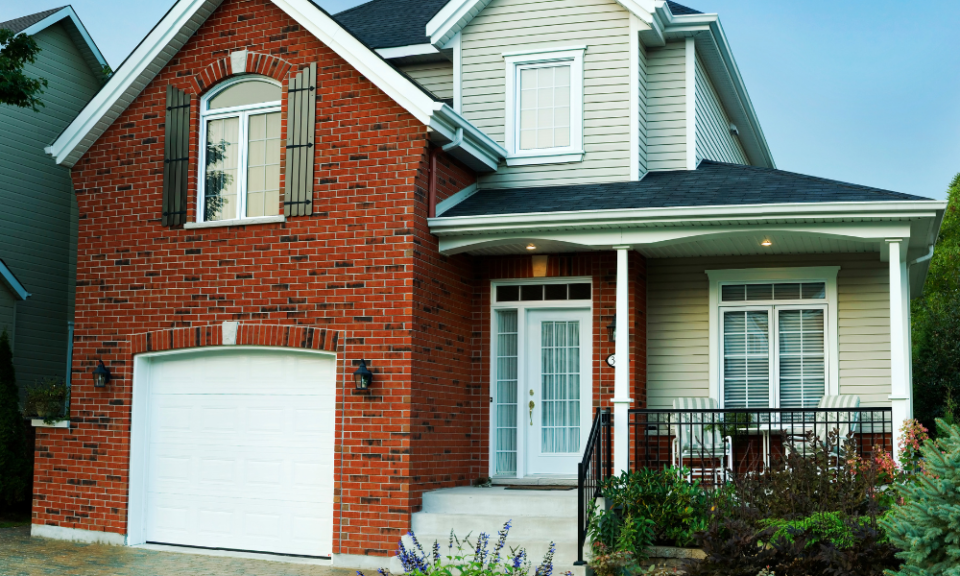Hidden within the walls, ceilings, and floors of many homes lie structural gaps that can wreak havoc on both comfort and finances. These unseen fissures and openings might appear insignificant at first glance, but their long-term impact can be substantial. From escalating energy bills to compromising the structural integrity of your property, understanding and addressing these gaps is critical for every homeowner.
Understanding Structural Gaps
Structural gaps refer to the small openings, cracks, or separations in a building’s envelope that disrupt the continuity of walls, windows, doors, and other construction elements. These gaps often occur where different materials meet or where components such as window frames, door frames, and wall assemblies converge. Over time, factors like settling of the structure, weather fluctuations, and even poor construction practices can cause these tiny breaches to widen.
Not all structural gaps are immediately visible. Many are hidden behind drywall or insulation, making them difficult to detect without a professional evaluation. Yet, even when concealed, these gaps provide pathways for air, water, and pests to infiltrate the home. The uninvited exchange of indoor and outdoor environments can disturb the carefully controlled climate inside, leading to issues that may not be apparent until the damage is extensive.
How Structural Gaps Occur
Several factors contribute to the development of structural gaps. Construction quality plays a significant role; buildings constructed with outdated techniques or lower-grade materials are more prone to developing gaps. As buildings age, normal wear and tear, as well as environmental stressors such as temperature changes, humidity, and wind, can cause materials to contract and expand, eventually leading to cracks and openings.
Another common cause is poor sealing and insulation. When gaps exist around windows, doors, or between wall segments, the natural process of expansion and contraction is amplified. These gaps can also develop from moisture intrusion, where water seeps into the structure and weakens the bond between building materials. In many cases, homeowners might not notice these gaps until they result in a tangible problem, such as a spike in energy costs or visible signs of mold and mildew.
The Impact on Energy Efficiency
One of the most immediate and quantifiable effects of unseen structural gaps is the loss of energy efficiency. When a home’s envelope is compromised, conditioned air escapes, and outdoor air infiltrates the space. This constant exchange forces heating and cooling systems to work harder to maintain a comfortable indoor temperature, driving up energy consumption and utility bills.
Even small gaps can lead to significant energy losses. The heat loss during winter months can cause a house to feel drafty and cold near windows or doorways, compelling homeowners to raise the thermostat. Conversely, in summer, cool air can escape, placing extra strain on air conditioning systems. In both scenarios, the extra energy usage directly translates into higher monthly bills.
Furthermore, the uneven distribution of heat can create cold spots and areas of condensation. Over time, these temperature discrepancies may lead to the deterioration of building materials. When insulation is compromised by moisture, its ability to regulate temperature effectively is diminished, exacerbating the problem of energy inefficiency.

Implications for Structural Integrity
While energy inefficiency is one of the more noticeable consequences of structural gaps, the hidden damage they cause within a home’s structure can be even more detrimental. Water and moisture that seep through these gaps can infiltrate wall cavities, foundations, and other structural components. Over time, this moisture can lead to rot, mold growth, and even weakening of load-bearing elements.
For example, if water infiltrates a wall cavity repeatedly, it can lead to the decay of wooden studs and framing members. This decay is not only costly to repair but can also compromise the safety of the structure. In regions where freeze-thaw cycles are common, moisture trapped in structural gaps can freeze, expand, and eventually crack masonry or concrete elements. Such damage is often irreversible without significant repair work and can dramatically reduce the lifespan of a building.
Additionally, the presence of moisture and mold within structural elements can have a cascading effect on other systems in the home. Electrical wiring, for instance, may be affected by prolonged moisture exposure, increasing the risk of short circuits and even fire hazards. As these issues accumulate, the overall integrity of the building is put at risk, leading to potentially expensive and invasive repairs down the line.
Health and Safety Concerns
Unseen structural gaps do not only have financial and structural implications—they also affect the health and safety of a home’s occupants. Gaps that allow moisture and air infiltration create environments where mold, mildew, and bacteria can thrive. Mold spores released into the air are known to cause respiratory issues, allergies, and other health problems, particularly for vulnerable populations such as children, the elderly, or individuals with compromised immune systems.
Furthermore, the drafts caused by structural gaps can lead to uneven heating and cooling, making it challenging to maintain a consistent and healthy indoor climate. Poor air quality and fluctuating temperatures may contribute to discomfort and exacerbate conditions like asthma. In some cases, the unchecked growth of mold and mildew may also produce unpleasant odors that affect the livability of the home.
The danger isn’t limited to health alone; safety risks are also present when gaps undermine the structural integrity of a building. For instance, water infiltration in load-bearing walls or foundations may eventually lead to structural failures that could put the entire household at risk. These safety concerns highlight the importance of identifying and repairing structural gaps promptly, even if the issues appear minor initially.
Financial Ramifications
Perhaps one of the most compelling reasons to address structural gaps early is the significant financial burden they can impose over time. The hidden nature of these gaps means that the cost of repairs can escalate quickly once the damage is visible. Homeowners might initially invest in regular maintenance, only to face unexpected expenses as minor gaps expand into major repair projects.
Increased energy bills are an ongoing, insidious cost that may go unnoticed until they become unmanageable. A home that leaks conditioned air is effectively throwing money out the window, with each winter or summer forcing the HVAC system to work overtime. Over time, the cumulative cost of wasted energy can be staggering, particularly in areas with extreme seasonal temperatures.
Moreover, if structural gaps lead to water damage, mold growth, or compromised insulation, the cost of remediation can be significant. Repairing structural damage is often more expensive than preventive maintenance. In some instances, homeowners might even find that their property value has decreased due to the visible effects of neglect, making it harder to sell or refinance the home in the future.
Insurance companies might also be reluctant to cover damage caused by long-term maintenance issues such as structural gaps. When claims are made, insurers could argue that the damage resulted from a lack of proper upkeep rather than a sudden or unexpected event. This scenario leaves homeowners facing out-of-pocket expenses for repairs that could have been prevented with early intervention.
Detection and Remediation
Detecting structural gaps before they escalate into significant problems is a crucial step for every homeowner. Routine inspections, particularly in older homes, can help identify potential areas of concern. Look for signs such as drafts near windows and doors, unusual moisture patterns on walls and ceilings, or visible cracks in the foundation. These indicators often point to the presence of gaps that are compromising the home’s energy efficiency and structural soundness.
Technology can also play a role in detecting hidden gaps. Infrared thermography, for example, allows professionals to visualize temperature differences within a structure, revealing areas where heat is escaping. This method can identify hidden voids and cracks that are not visible to the naked eye, allowing for targeted repairs before significant damage occurs.
Once gaps have been identified, remediation strategies typically involve sealing and reinforcing the affected areas. High-quality caulking, weatherstripping, and sealants can help restore the integrity of a window or door frame, reducing drafts and preventing moisture penetration. In more severe cases, structural repairs might be necessary. These repairs can involve reinforcing wall assemblies, replacing damaged insulation, or even undertaking major reconstruction to ensure the building envelope is sound.
In addition to these repair methods, homeowners may consider upgrading their windows and doors to more energy-efficient models. Modern construction techniques incorporate advanced materials and design features that minimize the risk of gaps developing in the first place. Investing in these upgrades not only improves energy efficiency but also adds long-term value to the property by enhancing its overall structural integrity.
Preventative Measures and Maintenance
Prevention is always preferable to repair, particularly when it comes to unseen structural gaps. Regular maintenance and inspections are key to preventing minor gaps from developing into costly problems. Homeowners should periodically check the seals around windows, doors, and other openings, ensuring that caulking and weatherstripping remain intact and effective. Small gaps, if left unaddressed, can widen over time as a result of seasonal changes and normal wear and tear.
Another proactive measure is improving the overall insulation of the home. High-quality insulation can help minimize temperature fluctuations that contribute to the expansion and contraction of building materials, reducing the likelihood of gaps forming. Upgrading insulation in attics, basements, and crawl spaces can be a worthwhile investment that pays off in energy savings and reduced maintenance costs over the long term.
It’s also important to be mindful of landscaping and water management around the home. Proper drainage systems, gutters, and downspouts help direct water away from the foundation, reducing the risk of moisture infiltration that can weaken structural elements. Ensuring that the grading around the home slopes away from the foundation is another effective strategy to prevent water accumulation and subsequent damage.
Engaging with professionals who specialize in building diagnostics can also provide peace of mind. Regular inspections by certified experts can uncover hidden issues before they escalate. These professionals can offer targeted advice on maintenance practices, insulation upgrades, and other preventative measures tailored to the specific needs of a home.
Future-Proofing Your Home
As building technologies evolve, so too do the strategies for mitigating the effects of structural gaps. New construction methods and materials are continuously being developed to enhance the durability and energy efficiency of homes. Homeowners who invest in modern building practices—whether through new construction or retrofits—can significantly reduce the risk of unseen gaps causing future problems.
Innovations in building science now include integrated systems that monitor temperature, humidity, and air leakage in real time. These smart home technologies can alert homeowners to changes in the building envelope, allowing for prompt intervention before minor issues develop into major repairs. By leveraging data and predictive analytics, these systems can help maintain a stable indoor environment and reduce overall energy consumption.
Incorporating sustainable building materials that offer superior insulation and resistance to moisture is another promising approach. Advances in composite materials and energy-efficient window systems, for example, help create a more resilient building envelope. These materials are designed to withstand the natural stresses of expansion and contraction, thereby minimizing the formation of structural gaps over time.
Furthermore, thoughtful architectural design that considers the interaction between indoor and outdoor environments can play a vital role in preventing energy loss. Strategic placement of windows, doors, and other openings—not to mention the integration of thermal breaks and high-performance insulation—ensures that the building envelope remains robust and efficient. Homeowners looking to future-proof their properties can work with architects and builders who prioritize these principles, ensuring that their homes remain comfortable, energy-efficient, and structurally sound for years to come.

